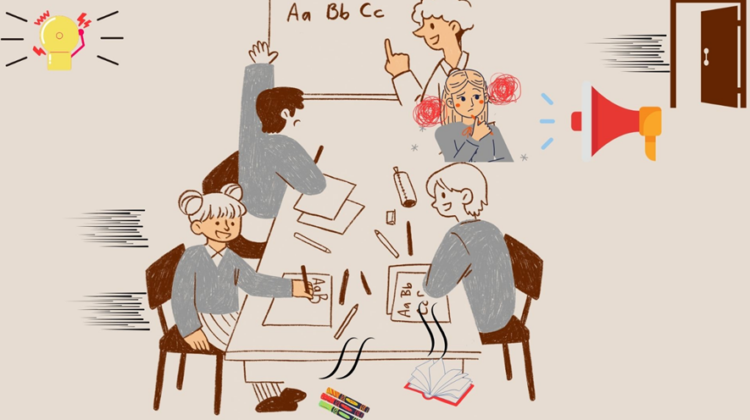
This study is by Marco Caniato (Free University of Bozen-Bolzano and University of Applied Science HFT of Stuttgart), Federica Bettarello (University of Trieste), Arianna Marzi (Free University of Bozen-Bolzano) and Andrea Gasparella (Free University of Bozen-Bolzano)
Inclusion of Additional Support Needs (ASN) sensitivities
Students on the autism spectrum often experience heightened sensitivity to environmental sounds, which can significantly affect their concentration and overall performance in educational settings.
Current standards and a lack of inclusion provision
While there are numerous guidelines, such as UNI 11532-2:2020 (Italy), Building Bulletin 93 (UK) and ANSI/ASA S12.60-2010/Part 1 (USA), that outline the necessary acoustic parameters for classrooms, including limits on reverberation time, clarity and definition, there is a significant lack of information regarding background noise level thresholds. Moreover, these standards largely cater to the needs of typical occupants, often overlooking the inclusion and unique requirements of students with special or additional needs.
Study Method
Recent research has begun to address these gaps by examining how various levels of background noise affect the performance of students with autism.
Our study in particular measured the impact of incremental increases in background noise on task performance. Participants, who were individuals on the autism spectrum, were exposed to baseline noise conditions of 52 dB(A), with subsequent increases to 55 dB(A) and 60 dB(A).
The study evaluated their ability to concentrate and return to tasks following sudden auditory disturbances, such as the sound of squeaky chairs, objects falling (e.g., books or markers), school bells, or slamming doors, comparing with the ones of standard occupants.
Applied spaces
To test the real-world applicability of these findings, the study also simulated the introduction of these noise sources in different educational environments, including an elementary school classroom, a university classroom, and a school cafeteria. These environments were tested under both reverberant conditions and with the addition of sound-absorbing materials designed to meet the UNI 11532-2 standard.
Study Results and key findings
The findings revealed that even modest increases in background noise significantly disrupted the students’ ability to maintain focus and complete tasks. When the background noise rose from 52 dB(A) to 55 dB(A) or 60 dB(A), the performance of students with autism was more adversely affected by sudden noises than the ones of standard occupants. These disturbances not only broke their concentration, but also made it considerably more difficult for them to re-engage with the task at hand.
– Existing educational spaces may not be inclusive for neurotypical and neurodivergent students
In the simulated environments, the spaces that were in their original reverberant state or modified, showed no compliance with the above-mentioned thresholds. When adding sound-absorbing materials, they were in some cases able to meet the lower noise thresholds necessary for autistic students.
These results highlight a critical issue: existing educational spaces may not be inclusive for both neurotypical and neurodivergent ones.
– Implications for educational environments
This research underscores the importance of revisiting current acoustic standards in educational settings to better include autistic students. Given their increased sensitivity to sound, it is crucial to establish lower thresholds for background noise levels and to implement noise reduction strategies that minimize sudden disturbances.
Educational institutions can significantly improve the learning experiences of autistic students by integrating sound-absorbing materials, modifying classroom layouts and reducing sources of disruptive noise.
– Tailoring acoustics to support an inclusive atmosphere
By tailoring acoustic environments to the needs of all students, schools can foster a more inclusive atmosphere that supports the diverse cognitive and sensory needs of their students, ultimately enhancing both well-being and academic performance.
Acknowledgement
This work was partially financed by the European Interreg BeSENSHome project, ITAT-11-016 CUP: I53C23001720007. https://besenshome.units.it/


Marco Caniato is an RTD at the Faculty of Science and Technology of the Free Univerity of Bozen-Bolzano. He does research in building physics, indoor comfort and acoustics. Marco specialises in people featuring neurodisorders, relating to acoustics, indoor comfort, materials and their application in buildings.
Federica Bettarello is a post doc. at the Department of Engineering and Architecture of the University of Trieste. Her main research focuses are related to the acoustic indoor comfort of neurotypical and neurodivergent individuals
Arianna Marzi is a PhD Candidate and a research fellow at the Faculty of Engineering of the Free University of Bozen-Bolzano. Her PhD thesis is focused on the Understanding Indoor Environmental Stressors Influence On Neurodivergent Occupants
Andrea Gasparella is a Professor at the Faculty of Engineering of the Free University of Bozen-Bolzano and he is currently its Dean. Andrea coordinates the Building Physics group, focusing his research on thermal, acoustic, visual and indoor environmental quality topics
Previous post on AcousticBulletin.com featuring Marco’s research:

